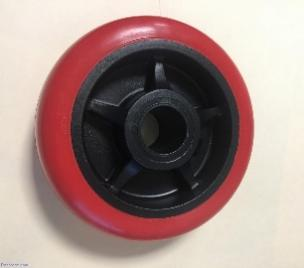Definition and Principle
Injection molding, also known as injection molding, is an efficient plastic processing technology that injects molten plastic material into a precisely designed mold, and then cools and solidifies in the mold to form a plastic product of the desired shape and size. This process can produce consistent products in batches and periodically, and is suitable for the production of various plastic parts with complex shapes.
The injection molding process mainly includes the following stages: mold closing, filling, pressure holding, cooling, mold opening and demolding. These six stages directly determine the molding quality of the product and are a complete continuous process.
Filling stage:
Filling is the first step in the injection molding cycle, starting from the mold closing and injection molding, until the mold cavity is filled to about 95%. The length of the filling time directly affects the molding efficiency, but it is also subject to various conditions, such as the type of plastic, viscosity, etc.
Pressure holding stage:
The function of the pressure holding stage is to continuously apply pressure, compact the melt, and increase the density of the plastic to compensate for the shrinkage behavior of the plastic. The pressure holding stage should continue until the gate is solidified and sealed, at which time the mold cavity pressure reaches the highest value.
Cooling stage:
The design of the cooling system is very important in injection molding molds. Only when the molded plastic products are cooled and solidified to a certain rigidity can they avoid deformation due to external forces after demolding. The cooling time accounts for 70% to 80% of the entire molding cycle, so a well-designed cooling system can greatly shorten the molding time, improve productivity and reduce costs.
Demolding stage:
Demolding is the last link in the injection molding cycle. Improper demolding methods may cause uneven force on the product during demolding, causing defects such as product deformation.
Process characteristics and applications The injection molding process has the following characteristics:
High efficiency and cost-effectiveness: The injection molding process can achieve high-efficiency mass production, and more plastic products can be produced per unit time at a relatively low cost.

Material diversity: Various plastic materials can be processed, such as polyethylene (PE), polypropylene (PP), polyvinyl chloride (PVC), polystyrene (PS), polyamide (PA), etc. These plastic materials have different properties and can meet the application needs of different fields.
Strong adaptability: Suitable for the production of plastic products of various complex shapes, such as boxes, shells, pipes, special-shaped parts, etc., and can realize multiple process composites, such as injection molding-blow molding, injection molding-injection stretching, injection molding-hot pressing, etc.
High degree of automation: From raw material preparation, injection molding, cooling, demolding to post-processing, all links can achieve automated production, reducing labor intensity and improving production efficiency.
Application field The application of injection molding technology is very extensive, involving the following fields:
Automotive industry: production of dashboards, bumpers, lights and other parts.
Household appliances: manufacturing plastic parts for home appliances such as washing machines, refrigerators, air conditioners, etc.
Daily necessities: production of various plastic containers, packaging boxes, etc.
Medical equipment: manufacturing disposable syringes, blood bags and other medical supplies.
Toy industry: production of various plastic toys.
Electronic products: manufacturing mobile phone cases, computer accessories and other electronic equipment parts.
Previous: None
Next: How to effectively avoid bending and springback during stamping
Comments
Please Join Us to post.
0